The Results Are In: PLC is the 2019 Program of Choice
TOPICS
WheatShelby Myers
Economist
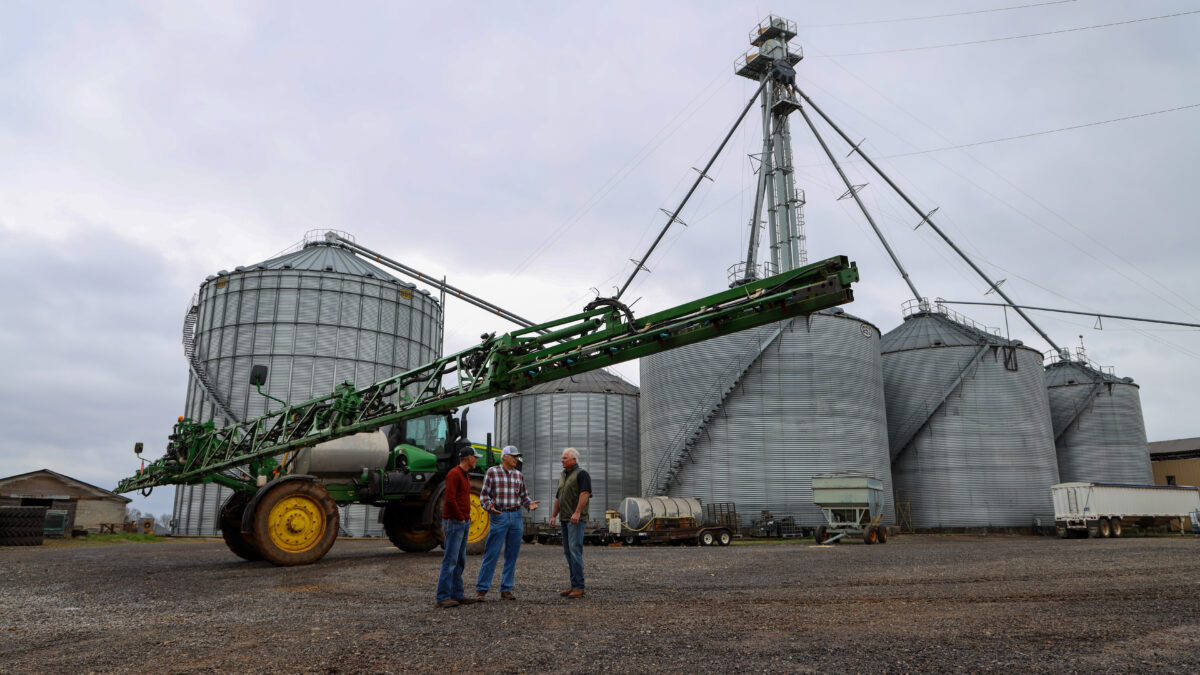
photo credit: Alabama Farmers Federation, Used with Permission
Shelby Myers
Economist
The deadline for farmers with base acres eligible for Title I commodity safety net programs was March 16. Farmers had the opportunity to make a one-time election to enroll base acres on a commodity-by-commodity basis in either Agricultural Risk Coverage-County Option or Price Loss Coverage for the 2019/20 and 2020/21 crop years (What’s in Title I of the 2018 Farm Bill for Field Crops? and ARC-County, A Bird in The Hand for Some in 2019). If a farmer chooses Agricultural Risk Coverage-Individual, all base acres on the farm, regardless of commodity, are enrolled in ARC-IC. Farmers will not be able to change their choice of enrollment until 2022, e.g., Reviewing ARC, PLC and SCO Commodity Safety Net Programs. This article reviews the base-acre elections made by farmers for the 2019/20 crop year compared to 2018 enrolled base acres.
U.S. Base Acres Enrolled in Farm Programs for 2019
Farmers enrolled a total of 253 million acres in Title I commodity safety net programs in 2019. Of that total, 177 million acres, or 70%, are covered under PLC. There are 66.5 million acres, or 26%, enrolled in ARC-CO and 9.8 million acres enrolled in ARC-IC, which is 4% of the total acres. Figure 1 displays the breakdown of all U.S. base acres enrolled by each program.
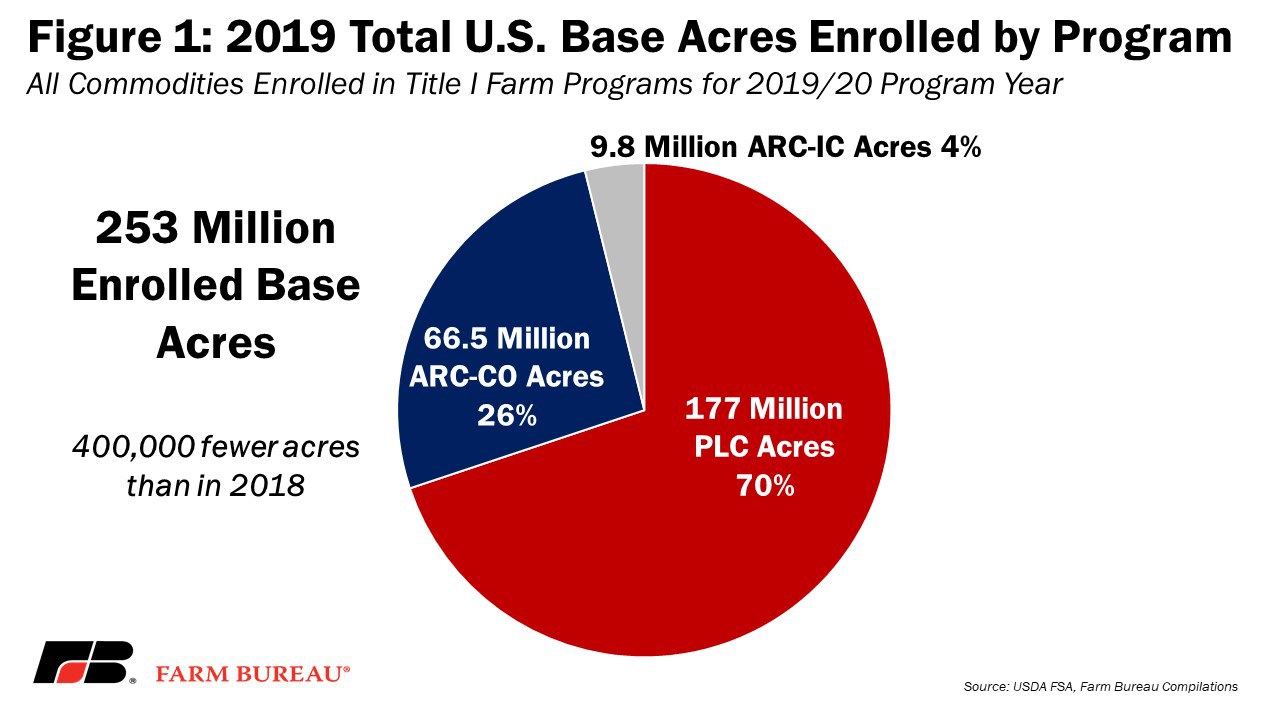
When divvied up by major commodity, 72 million acres of corn were enrolled in PLC, while 17.7 million acres were put in ARC-CO and 5.6 million acres were put into ARC-IC. Soybeans led the way in enrollment for ARC-CO, with 43 million acres enrolled. Farmers put only 7.6 million acres of soybeans into PLC and 3.3 million acres into ARC-IC. Wheat base acres accounted for 59 million PLC acres and 3.7 million acres of ARC-CO enrollments, but only about 661,000 acres of wheat were combined into ARC-IC. Of seed cotton base acres, 12.8 million acres were enrolled in PLC, with small portions put into ARC-CO and ARC-IC. A majority of grain sorghum and barley acres went into PLC, 8.1 million and 5.1 million, respectively, but small portions were put into ARC-CO, 515,000 and 300,000, respectively. Almost all peanut and long-grain rice acres were put into PLC. Figure 2 breaks down program enrollment by acres for select commodities.
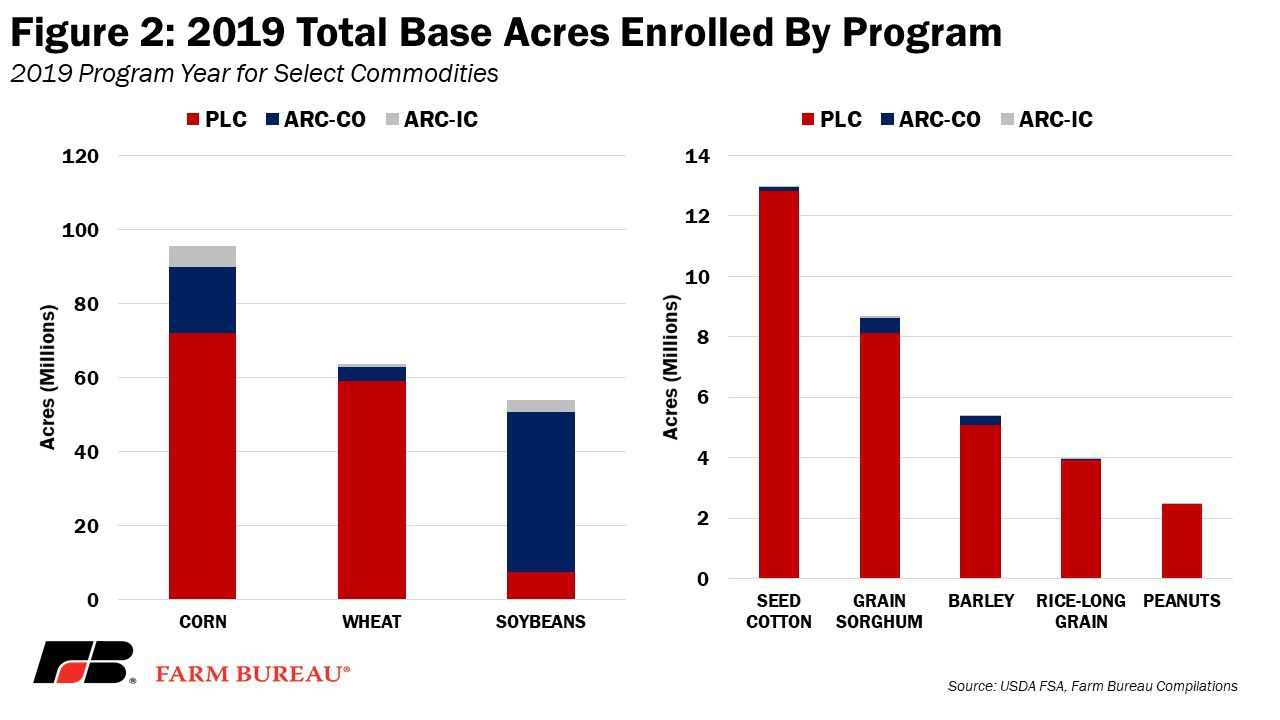
Farm Program of Choice by Commodity
PLC proved to be the program of choice for commodities in 2019. PLC program payments are made on 85% of the farm’s base acres multiplied by the farm’s PLC program yield. The PLC program delivers a payment when the price of a commodity falls below a specific price floor. For corn, a dramatic shift occurred as producers moved from selecting ARC-CO coverage during the 2014 farm bill to selecting PLC during the most recent sign-up. Corn producers put 76% of the base acres into PLC, compared to only 7% in PLC during 2018. The effective reference price of corn is $3.70. If the market year average price of corn falls below $3.70, the PLC payment rate is triggered, and the base acres of corn enrolled in PLC will receive a program payment of the difference per bushel. With an enrollment of over 93% or more of total base acres, PLC was also the program of choice for farmers growing wheat, seed cotton, grain sorghum, barley, long-grain rice and peanuts. Figure 3 displays the percent of base acres enrolled in PLC during the 2018 and 2019 program years.
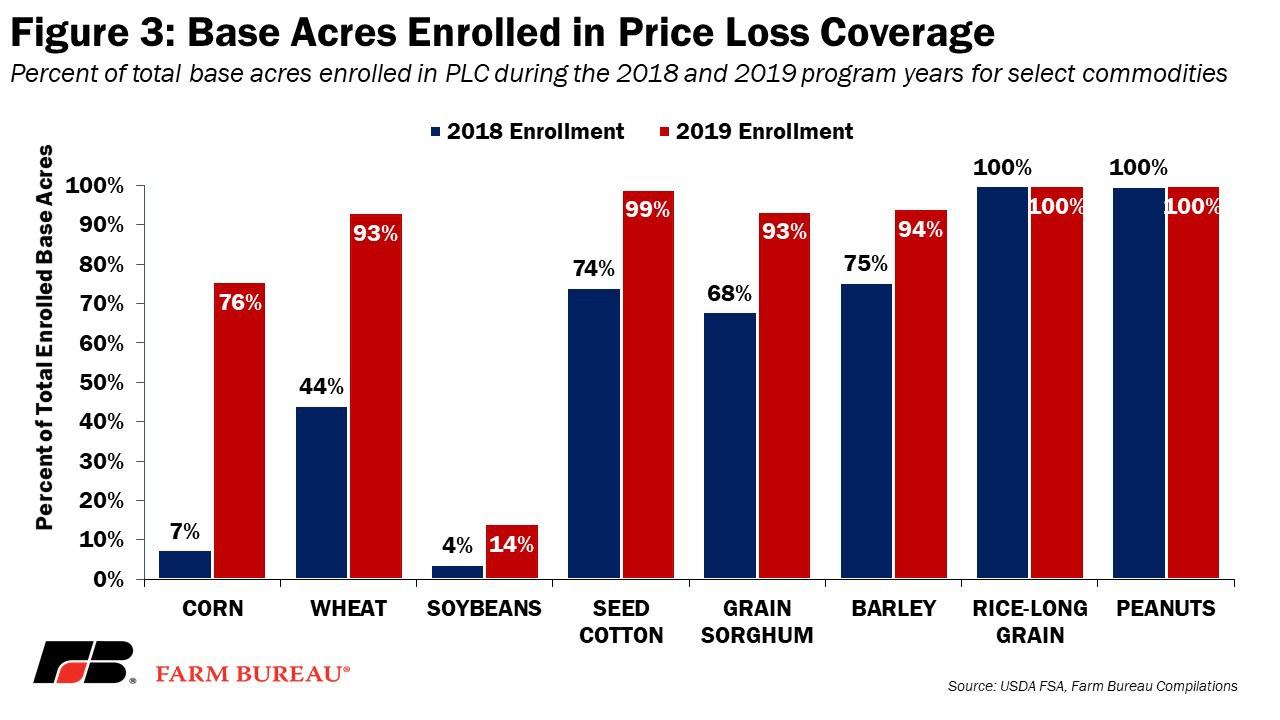
Agriculture Risk Coverage at an Impasse
Agriculture Risk Coverage is an income support program that triggers a payment when actual county-level crop revenue falls below 86% of the benchmark revenue and is based on the five-year Olympic moving average of county yields and the marketing year average price. ARC-CO program payments are capped at 10% of the ARC-CO benchmark revenue and are paid on 85% of a farm’s base acres for each covered commodity. For ARC-CO, soybean base acres were the only commodity for which a majority of the base acres were enrolled in the program.
Of the total 2019 soybean base acres, 80% were enrolled in ARC-CO. Corn had the next highest amount, with 19% of base acres selecting ARC-CO in 2019. About 6% each of wheat, grain sorghum and barley base acres were enrolled in ARC-CO. About 1% of cotton seed base acres were enrolled in ARC-CO, while fewer than 1% of base acres for peanuts and long-grain rice were enrolled. Figure 4 shows the percent of base acres enrolled in ARC-CO during the 2018 and 2019 program years.
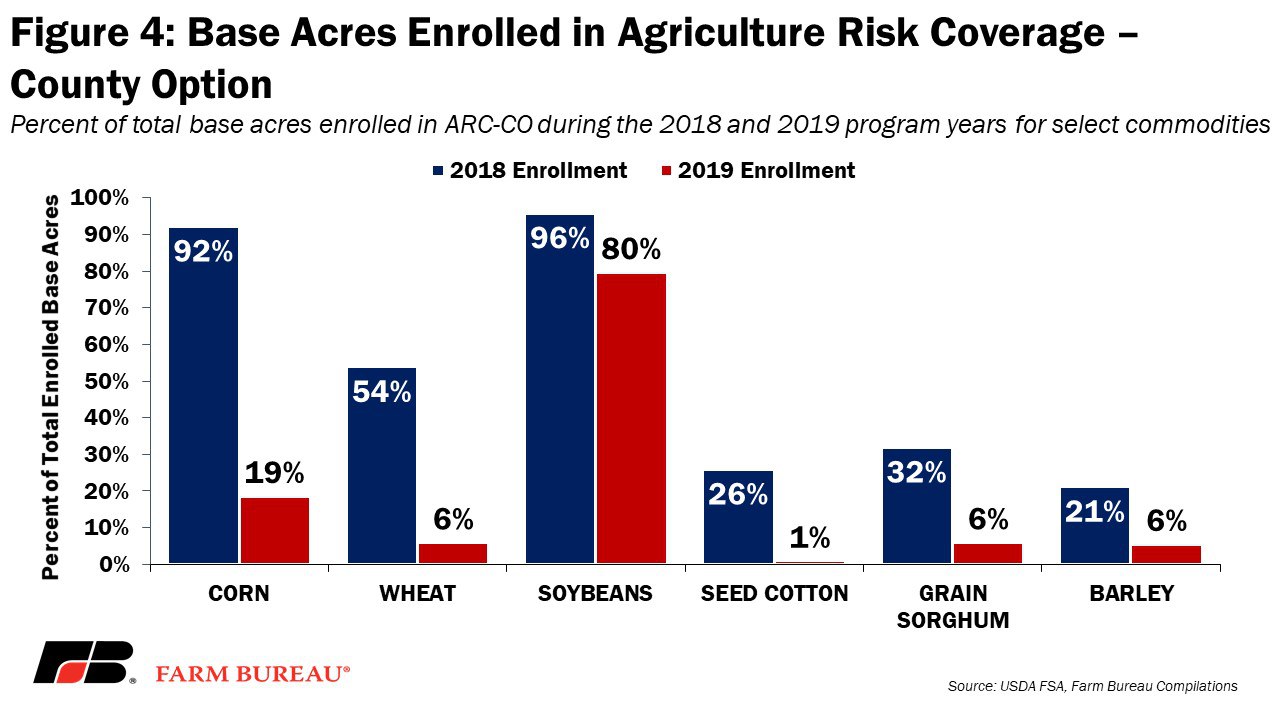
The ARC-IC operates similarly to ARC-CO but applies only to 65% of the base acres enrolled and enrollment is not on a commodity-by-commodity basis. ARC-IC is a whole farm program that groups all covered commodity base acres together and utilizes the individual farm’s yields. An ARC-IC payment is triggered when the actual crop revenue for all covered commodities planted on the farm is less than 86% of the benchmark revenue and is capped at 10% of the individual weighted benchmark revenue. Corn and soybean base acres led 2019 ARC-IC enrollment with 6% of each commodity’s total base acres. Additionally, about 1% of wheat base acres and 1% of grain sorghum acres were enrolled in ARC-IC for 2019. The other select commodities had less than 1% of total base acres entered in the whole-farm-style safety net program. Figure 5 shows the percent of base acres enrolled in ARC-CO during the 2018 and 2019 program years.
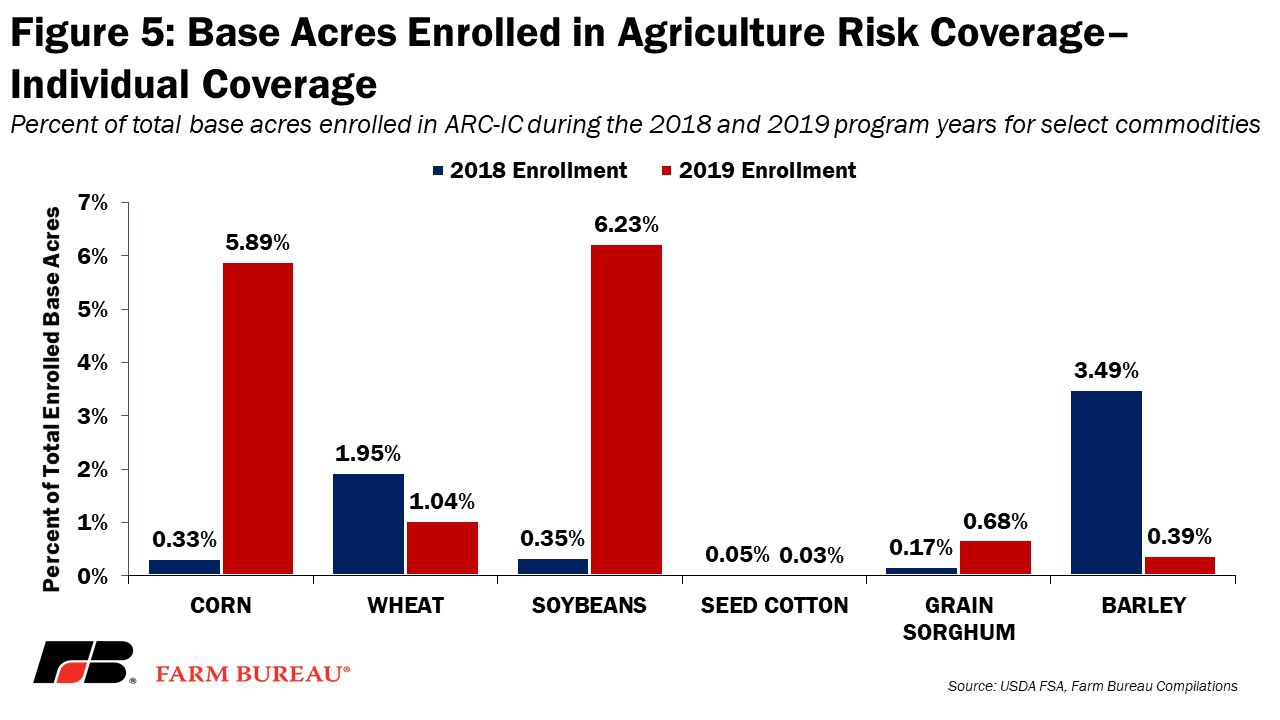
Summary
The Title I PLC safety net program was the program of choice for farmers in the 2019/20 program year. Because farmers cannot change their election until 2022, it will also be the program farmers are enrolled in for the 2020/21 marketing year. Before mid-March, expectations for the marketing year average price were mixed as farmers were looking at the possibility of increased demand with finalized trade deals, and analysts were predicting a year of record production for many crop supplies.
Many of the expectations impacting prices have changed as a result of the uncertainty brought on by COVID-19. As the coronavirus sends crop and livestock prices into a tailspin, time will tell whether or not program decisions provide farmers the necessary safety net needed to carry them into the next year.
Trending Topics
VIEW ALL